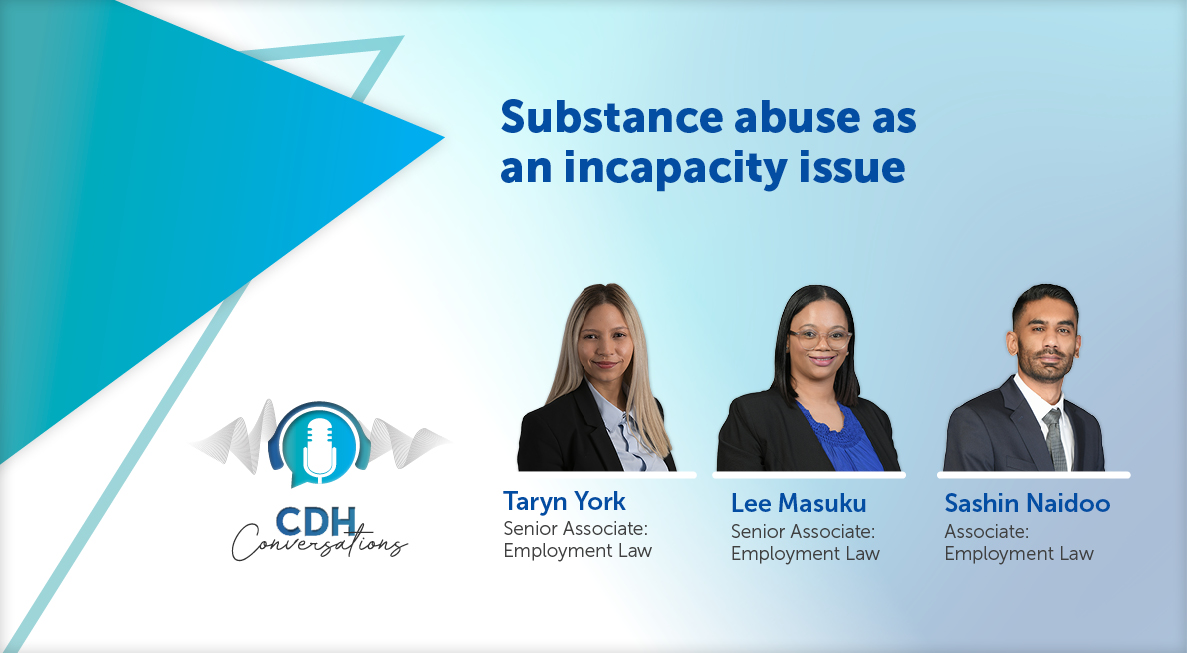A long-awaited guide on venture capital companies published for comment
The VCC tax regime was introduced into the Income Tax Act, No 58 of 1962 (Act) in 2009 and is aimed at encouraging investment into small and medium-sized enterprises and junior mining companies. Section 12J of the Act encompasses the relevant legislation governing VCCs and provides for the formation of an investment holding company, described as a VCC, where investors subscribe for shares in the VCC (venture capital shares) and claim an income tax deduction for the subscription price incurred. The VCC, in turn, invests in “qualifying companies” (ie investee companies).
Various legislative amendments to s12J have given rise to an increased participation in the asset class, evidenced by the increasing number of approved VCCs. According to the SARS website, 116 companies have been approved as VCCs, while 2 have had their VCC status withdrawn, as at 18 June 2018.
This article provides a high-level overview of specific aspects of the Guide. It is important to note that the Guide is not an official publication as defined in s1 of the Tax Administration Act, No 28 of 2011 and accordingly does not create a practice generally prevailing under s5 of that act.
Requirements for a VCC
A company must be approved as a VCC if the Commissioner for SARS is satisfied that, amongst other requirements, the sole object of such company, which must be a resident of South Africa, is the management of investments in qualifying companies.
With reference to the “sole object” requirement, the Guide provides that a VCC cannot carry on an active business itself. Stated differently, in addition to managing investments in qualifying companies, a VCC cannot “run another business or manage a trading or long-term investment portfolio in non-VCC investments”. The Guide provides the following example:
A VCC cannot acquire a number of properties for rental purposes. However, if the VCC has excess office space it may rent that excess space to tenants.
It is interesting to note that the Guide qualifies the above example by stating that whether a VCC is merely renting out excess space or has acquired extra space with the aim of renting, can be determined only on a case-by-case analysis.
Another interesting point mentioned in the Guide relates to the investing of funds, received by a VCC through the issue of shares, in “non-VCC investments”. It is stated that although a VCC cannot have a trading or long-term investment portfolio in non-VCC investments, the VCC can invest the funds it receives (through the issue of venture capital shares in non-VCC investments) on a short-term basis before those funds are invested in ‘qualifying companies’. The Guide expands on this point as follows:
The Act does not specify what the funds can be invested in during this interim period. The type of investment and manner of the investment must be in alignment with its sole object of the management of investments in qualifying companies. So, for example, an investment in a non-VCC company without a realistic short-term exit strategy would probably result in a transgression of the sole object requirement. By contrast, an investment in short-term debt instruments or preference shares is likely to be acceptable. However the terms of the specific investment and all the relevant facts will need to be assessed on a case-by-case basis to determine whether the VCC has met or transgressed the sole object requirement.
Deductions available to investors
The upfront income tax deduction, which lessens some of the investment risk for investors, is available for share subscriptions only. The deduction is only available in the year of assessment during which it is incurred and no deduction will be allowed in respect of shares acquired after 30 June 2021.
Section 12J(2) allows a taxpayer, subject to certain conditions, to claim a deduction for the expenditure actually incurred by that taxpayer in acquiring any venture capital share issued to that taxpayer by a VCC. The Guide refers to the term “taxpayer” being defined in s1(1) of the Act as “any person chargeable with any tax leviable under this Act” and provides that both resident and non-resident taxpayers can “potentially benefit from the incentive afforded under section 12J(2))”.
The deduction is available only for expenditure incurred by a taxpayer to acquire venture capital shares issued to that taxpayer by the VCC. The Guide provides that:
Only costs directly connected with the acquisition of the venture capital shares are deductible. By contrast, costs such as banking costs and those related to the obtaining of a loan (generally referred to as financing costs) are indirect and not allowable as a deduction. For example, if a taxpayer incurs financing costs of R5,000 on a loan of R100,000 which was used to acquire 100 venture capital shares at a cost of R1,000 per share, only the R100,000 acquisition cost would qualify for the deduction and not the R5,000 financing cost.
Requirements for a “qualifying company”
A “qualifying company” must comply with several requirements, some of which include:
- the company must not be a “controlled group company” (as defined in the Act) in relation to a group of companies; and
- the company must not carry on an “impermissible trade”
a) Controlled group company test
A “controlled group company” is a company that has a corporate shareholder that holds, directly or indirectly, at least 70% of the shares in that company. There has been some uncertainty regarding how to determine whether a potential “qualifying company” is a “controlled group company”. In other words, would one have regard to:
- the percentage of the number of equity shares held by the various companies in the potential “qualifying company”; or
- the monetary amount of share capital subscribed for in the potential “qualifying company”.
Simply put, the Guide provides that in order to determine whether a potential “qualifying company” is a controlled group company, one must consider the percentage of the number of equity shares held by the various companies in the potential “qualifying company” and not the monetary amount of share capital subscribed for. Furthermore, the Guide provides that:
A company will not be a controlled group company if the various companies described in the definition of “group of companies” subscribe for more than 70% of the aggregate monetary value of that company’s equity share capital but less than 70% in number. It may happen that a company which initially meets the definition of a qualifying company subsequently becomes a controlled group company owing to, for example, the acquisition of additional shares by a VCC, or another company, which results in the VCC, or that other company, holding at least 70% of that company’s equity shares. If this happens, it means the company will no longer constitute a “qualifying company” under s12J and the VCC would need to assess if it still met the requirements of a VCC.
b) Impermissible trade test
The definition of “impermissible trade” encompasses a number of trades, such as trades in respect of immovable property (other than hotel keeping), financial or advisory services, gambling and trades carried on mainly outside of South Africa. The Guide discusses each of these trades and provides examples of activities which would constitute “impermissible trades”. For example:
- trades carried on in respect of immovable property (other than hotel keeping) - the Guide confirms that trades such as the letting of immovable property, refurbishment or development of immovable property as well as trading in such property will be considered impermissible trades.
- any trade carried on by banks, insurers and any trade carried on in respect of money-lender or hire purchase financing - The Guide provides the following example of money-lending which is ancillary to the main trade:
- Company A’s main activity, in terms of focus and revenue and profit contribution, is the manufacture and sale of machinery to customers. Sales are concluded on a cash or credit basis. The company charges interest if machinery is sold on credit. The provision of credit is ancillary in terms of the resources allocated to the activity and its contribution to revenue and profit. … Notwithstanding the fact that the supply of credit is ancillary, Company A is still conducting a trade in respect of money-lending or hire-purchase financing and therefore an impermissible trade.
- any trade carried on mainly outside South Africa - the Guide refers to the case of SBI v Lourens Erasmus (Eiendoms) Bpk 1966 (4) SA 434 (A) in which the court had to determine whether total net profit was derived solely or mainly from dividends. The court held that the word “mainly” prescribed a purely quantitative standard of more than 50%. Interestingly, the Guide indicates that this meaning of “mainly” is also applicable in the context of determining whether a trade is carried on mainly outside of South Africa. Furthermore, the Guide provides that a company that conducts the majority of its trade outside South Africa will meet the 50% test and its trade will be regarded as impermissible. By implication, if the majority of the company’s trade is performed in South Africa, it will not meet the 50% test and its trade will be regarded as permissible. It is important to note that the Guide indicates that “the appropriateness of the method applied to determine whether a trade is carried on mainly outside South Africa will be assessed on a case-by-case basis”.
Anti-avoidance provisions
The s12J(2) deduction is subject to anti-avoidance provisions, such as:
- where an investor has used any loan or credit to finance the expenditure incurred to acquire shares in the VCC, the amount of the deduction is limited to the amount for which the investor is deemed to be at risk on the last day of the year of assessment; and
- no investor can be a “connected person” in relation to the VCC after the expiry of a period of 36 months commencing on the first date of the issue of the venture capital shares.
a) ‘At risk’ requirement
Where an investor has used any loan or credit to finance the expenditure incurred to acquire shares in the VCC, the amount of the deduction is limited to the amount for which the investor is deemed to be at risk on the last day of the year of assessment (s12J(3)(a)). The investor is deemed to be so at risk to the extent that the incurral of expenditure or the repayment of the loan or credit would result in economic loss to the investor, where no income is received by or accrued to the investor in future years from the disposal of any venture capital share issued to such investor as a result of that expenditure (s12J(3)(b)). However, a proviso to s12J(3)(b) provides that an investor will not be at risk if the loan or credit is not repayable within five years or if such loan or credit is granted to the investor by the approved VCC itself.
Section 12J(3) will therefore potentially apply when a taxpayer acquires or funds the venture capital shares or part of the venture capital shares by way of some form of credit. For example, the Guide states that where a taxpayer financed the purchase of venture capital shares with a loan, disposed of the shares and did not receive any income from the disposal but was still required to repay the outstanding amount of the loan, such taxpayer would be
exposed to financial risk and would be deemed to be at risk in terms of s12J(3)(b). In addition, where the taxpayer is not required to repay the loan, the taxpayer would not be exposed to an economic loss and would not be deemed to be at risk.
The Guide provides that when determining whether a taxpayer is at risk, regard must be had to all relevant surrounding circumstances including any transactions, agreements, arrangements, understandings or schemes that were entered into before or after the expenditure was incurred.
b) Connected person test
With effect from 1 January 2017, no investor can be a “connected person” in relation to the VCC after the expiry of a period of 36 months commencing on the first date of the issue of the venture capital shares. If at the end of any of these years of assessment, a taxpayer had previously incurred expenditure on venture capital shares issued by the VCC to that taxpayer and that taxpayer is a “connected person” in relation to the VCC, the Commissioner must give due notice to the VCC that the company’s approval as a VCC under s12J(5) will be withdrawn if corrective steps to rectify its non-compliance are not taken within the period stated in the notice. The Guide provides an example of how the “connected person” test is applied:
Facts:
On 5 January 2017, Investor Z, an individual, invested R300,000 in a VCC in return for venture capital shares issued by the VCC. This date was also the date on which the VCC first issued any venture capital shares. As a result of the acquisition of the shares, Investor Z held 35% of the VCC’s shares and thus became a connected person in relation to the VCC. The VCC did not issue any further shares.
Result:
Provided that all the requirements of s12J were complied with on 5 January 2017, Investor Z would be entitled to a deduction of R300,000 in that year of assessment under s12J(2), even though Investor Z was a connected person in relation to the VCC under paragraph (d)(iv) of the definition of “connected person”. Similarly, other investors would be entitled to a deduction under s12J(2) for expenditure incurred on venture capital shares issued to them by the VCC, even if Z remained a connected person in relation to the VCC during the 36-month period.
Once the 36-month period ends, the connected-person test must be performed at the end of every year of assessment after that date. If Investor Z were still a connected person at the end of Investor Z’s year of assessment ending after the 36-month period, and corrective steps were not taken by the VCC within the period stipulated by the Commissioner in the notice issued to the VCC, the VCC’s approval as a VCC would be withdrawn from the date it was granted.
No deduction would be available to future VCC investors in respect of new issues of shares and the VCC would need to include an amount of 125% of expenditure previously incurred by any person to acquire shares issued by the VCC in income.
If Investor Z had made the investment in 2016 and was a connected person at that time, no deduction would have been allowed to Investor Z under the previous wording of s12J(3A), since the connected-person test was applied at the time the investment was made.
The connected-person test must be performed at the end of the relevant years of assessment for all investors, not just Investor Z.
The Guide also provides clarity on aspects relating to recoupments, withdrawal of VCC approval, VCC investor certificates and tax administrative requirements applicable to VCCs.
Conclusion
It is important to note that the Guide does not delve into the precise technical and legal detail associated with VCCs. Accordingly, taxpayers are urged to obtain independent tax advice when considering utilising this investment vehicle.
Comments on the Guide are due by no later than 31 August 2018 and may be sent to policycomments@sars.gov.za. Queries which are specifically related to VCCs may be sent to vcc@sars.gov.za.
The information and material published on this website is provided for general purposes only and does not constitute legal advice. We make every effort to ensure that the content is updated regularly and to offer the most current and accurate information. Please consult one of our lawyers on any specific legal problem or matter. We accept no responsibility for any loss or damage, whether direct or consequential, which may arise from reliance on the information contained in these pages. Please refer to our full terms and conditions. Copyright © 2026 Cliffe Dekker Hofmeyr. All rights reserved. For permission to reproduce an article or publication, please contact us cliffedekkerhofmeyr@cdhlegal.com.
Subscribe
We support our clients’ strategic and operational needs by offering innovative, integrated and high quality thought leadership. To stay up to date on the latest legal developments that may potentially impact your business, subscribe to our alerts, seminar and webinar invitations.
Subscribe




